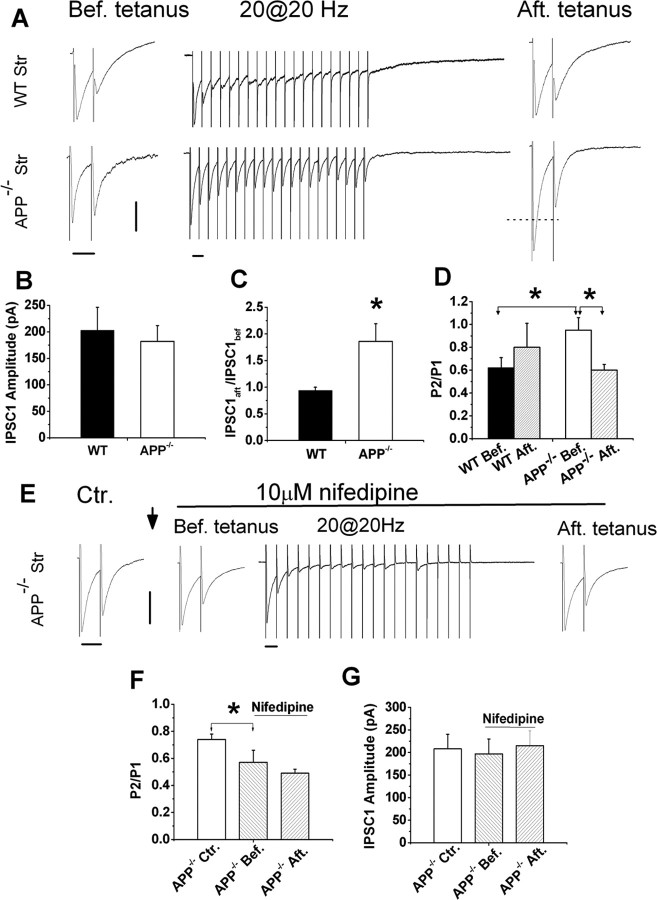Figure 3.
Altered STP in APP−/− striatal GABAergic synapses and normalization of STP by LTCC blocker nifedipine. A, Representative traces of WT and APP−/− striatal neurons in response to paired-pulse stimulation (before tetanus), tetanus (20 Hz, 1 s) and after tetanus paired-pulse stimulation. B, Similar IPSC1 amplitude in the presence of CNQX and APV in APP−/− striatum (N = 20) compared with WT controls (N = 12). C, The ratio of IPSC1 amplitude after tetanus (IPSC1aft) vs before the tetanus (IPSC1bef) in APP−/− striatal (N = 18) and WT controls (N = 12). D, Paired-pulse ratio (P2/P1) before and after tetanic stimulation in WT [WT Bef., 0.62 ± 0.09 (N = 15); WT Aft., 0.82 ± 0.21 (N = 6)] and APP−/− [APP−/− Bef., 0.95 ± 0.11 (N = 17); APP−/− Aft., 0.6 ± 0.05 (N = 12)]. E, Representative traces showing paired-pulse response in the absence of nifedipine (Ctr.), in the presence of nifedipine before train stimulation (Bef. tetanus), during the train (20 at 20 Hz) and after the train stimulation (Aft. tetanus). ↓: indicating 15 min application of 10 μm nifedipine. F, Paired-pulse ratio (P2/P1) in APP−/− striatal cultures in the absence [Ctr., 0.74 ± 0.04 (N = 6)] and presence of nifedipine (before and after tetanus) (Bef., 0.57 ± 0.09; Aft., 0.49 ± 0.03 (N = 6)]. G, IPSC1 amplitude in the absence (Ctr) and presence of nifedipine in APP−/− hippocampal cultures (before and after tetanus). Data shown as mean ± SEM. Calibrations: 100 pA/50 ms. *p < 0.05.

